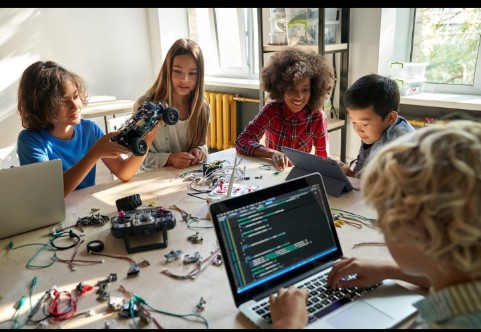In today’s digital age, access to technology and digital resources has become indispensable for education.
However, a significant digital divide persists, disproportionately affecting students from lower socioeconomic backgrounds or remote geographic locations.
This article explores why governments should prioritize bridging this divide in education, highlighting the disparities it creates and discussing relevant policies and programs aimed at fostering equitable educational opportunities for all.
Understanding the Digital Divide:
The digital divide refers to the gap between those who have access to modern information and communication technology (ICT) and those who do not.
In the context of education, this divide manifests in unequal access to computers, internet connectivity, and other digital resources essential for learning. Students from affluent families or urban areas often have greater access to these resources, while those from low-income households or rural communities face significant barriers.
Impact on Education:
The digital divide exacerbates existing inequalities in education, limiting the academic opportunities and success of disadvantaged students. Without access to digital resources, such as online textbooks, educational software, and internet research tools, these students may struggle to keep pace with their peers. This disparity can widen achievement gaps, perpetuate socioeconomic inequalities, and hinder social mobility.
Moreover, the COVID-19 pandemic highlighted the critical importance of digital access for education. As schools transitioned to remote learning, students without reliable internet or suitable devices faced significant challenges in accessing online lessons and completing assignments. The pandemic underscored the urgency of addressing the digital divide to ensure educational continuity and equity in times of crisis.
Government Responsibility:
Governments play a crucial role in addressing the digital divide and promoting equitable access to education. Recognizing the importance of technology in modern learning environments, policymakers must prioritize initiatives aimed at bridging this gap. By investing in infrastructure, providing subsidies for digital devices and internet access, and implementing inclusive educational strategies, governments can create a more level playing field for all students.
Policies and Programs:
Several policies and programs have been proposed or implemented to mitigate the digital divide in education:
Broadband Expansion Initiatives: Governments can invest in expanding broadband infrastructure to underserved areas, including rural communities and low-income neighborhoods. By ensuring reliable internet access for all households, students can participate in online learning and access educational resources from anywhere.
Device Provision Programs: To address the lack of access to digital devices, governments can distribute laptops, tablets, or other necessary equipment to students in need. These initiatives aim to close the technology gap and empower students to engage in digital learning activities both in and out of the classroom.
Digital Literacy Training: In addition to providing hardware and connectivity, governments can invest in digital literacy programs to equip students with the skills needed to navigate online resources effectively. By teaching digital literacy skills, students can maximize the educational benefits of technology while avoiding potential pitfalls such as misinformation or online safety risks.
Public-Private Partnerships: Collaboration between governments, educational institutions, and private sector stakeholders can facilitate the implementation of comprehensive solutions to the digital divide. By leveraging resources and expertise from multiple sectors, these partnerships can drive innovation and scale initiatives to reach more students in need.
Conclusion:
Bridging the digital divide in education is not only a matter of social justice but also an essential step towards building a more equitable and inclusive society.
By ensuring that all students have access to the technology and digital resources necessary for learning, governments can empower individuals to reach their full potential and contribute to the knowledge economy of the 21st century.
Through targeted policies, strategic investments, and collaborative efforts, we can work towards a future where every student has an equal opportunity to succeed, regardless of their socioeconomic background or geographic location.













